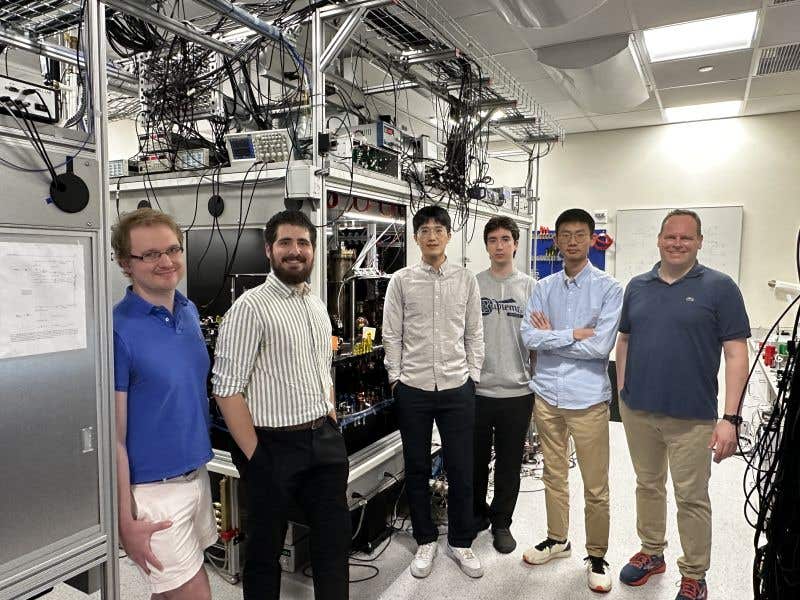Chicken feathers can revolutionize cancer treatment and other medical therapies
This innovation could significantly reduce the side effects of chemotherapy and repair crucial enzymes.

Recent research highlights a promising new method for drug delivery that uses proline, an amino acid commonly found in chicken feathers and skin tissue. This innovation could significantly reduce the side effects of chemotherapy and repair crucial enzymes. The study, published in the journal Chem, showcases how this technique could revolutionize cancer treatment and other medical therapies.
Researchers have developed a unique cage-like structure made from biologically compatible peptides. Peptides are short chains of amino acids, the building blocks of proteins. These cages can encapsulate drugs of various sizes, ensuring precise delivery within the body.
Chemotherapy often causes severe side effects such as hair loss and nerve damage. These occur because the treatment attacks healthy cells around tumors as well as the tumors themselves, a phenomenon known as 'off-site toxicity.'
The newly designed nano-sized cages can house chemotherapy drugs and deliver them directly to tumors. This targeted approach minimizes damage to healthy cells, potentially reducing side effects.
Versatile Drug Delivery System
The cage's structure is highly adaptable, allowing it to carry different types of drugs, including chemotherapy agents, antibiotics, and antivirals. Previously, such cages were made using hydrocarbons found in tar, which can be toxic to humans. The new method, however, uses proline and collagen, both of which are safe and readily available.
This innovative structure not only enhances drug delivery but also opens up new possibilities for enzyme replacement therapy. Enzymes are proteins that perform essential functions in the body.
In the past, medical treatments could only block the activity of faulty enzymes, which often led to side effects. The new peptide cages can potentially replace malfunctioning enzymes, offering a novel treatment method.
Related Stories
Sustainable and Scalable Production
Dr. Charlie McTernan, a Lecturer in Chemistry at King’s College London and Group Leader at the Francis Crick Institute, likens the cages to a molecular teabag. “What we’ve created is essentially a biologically compatible molecular teabag.
We can fill this teabag, or cage made from widely available proline and collagen, with several different medicines and deliver them in a much more targeted way than we could before,” Dr. McTernan explained.
The use of proline is particularly advantageous due to its straight and rigid shape, along with its solubility in water. Since the human body is about 60% water, this property makes proline an ideal candidate for drug delivery. By binding the peptide to small amounts of metals like palladium, researchers can create a structure that can be adjusted in size as needed.
The team is optimistic about scaling up production of these peptide cages. Unlike previous methods that relied on toxic hydrocarbons, the new approach uses proline and collagen, which are widely available and environmentally sustainable. This makes large-scale production feasible and sustainable.
Potential for Future Treatments
Dr. McTernan hopes that this breakthrough could lead to significant improvements in chemotherapy. “In time, we hope that this could mean that we can limit the hair loss, nausea, and other unpleasant side effects of chemotherapy. We might even be able to repair malfunctioning enzymes that have an influence on the development of cancer. The best part is we can do this sustainably and at scale,” he stated.
The implications of this research extend beyond chemotherapy. The ability to precisely deliver drugs and potentially replace faulty enzymes opens up a new frontier in medical treatment. This could lead to more effective therapies for a variety of diseases, with fewer side effects and a greater emphasis on sustainability.
By minimizing off-site toxicity and providing a flexible, sustainable, and scalable solution, this innovation holds great promise for the future of medicine.
For more science news stories check out our New Innovations section at The Brighter Side of News.
Note: Materials provided above by The Brighter Side of News. Content may be edited for style and length.
Like these kind of feel good stories? Get the Brighter Side of News' newsletter.



